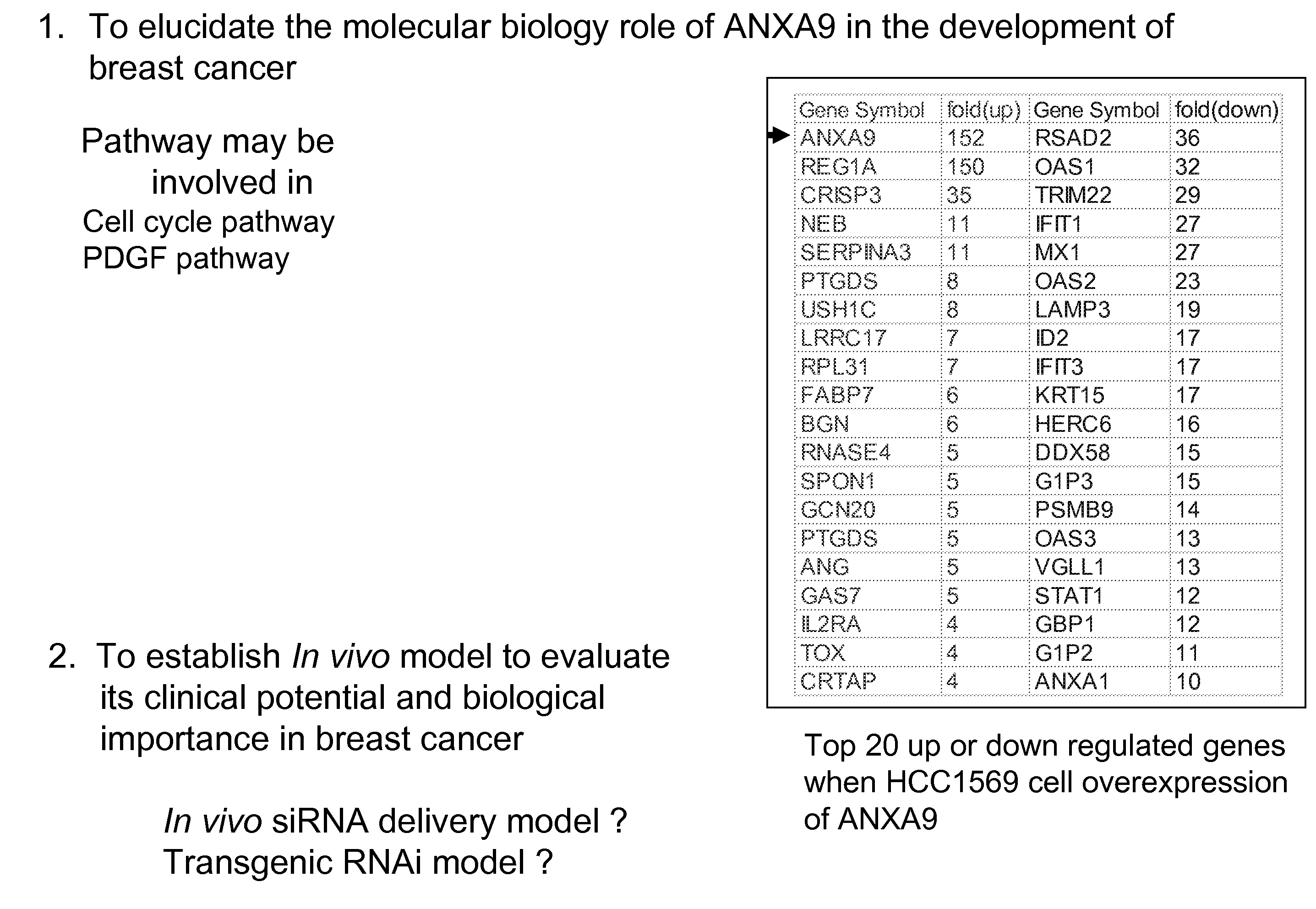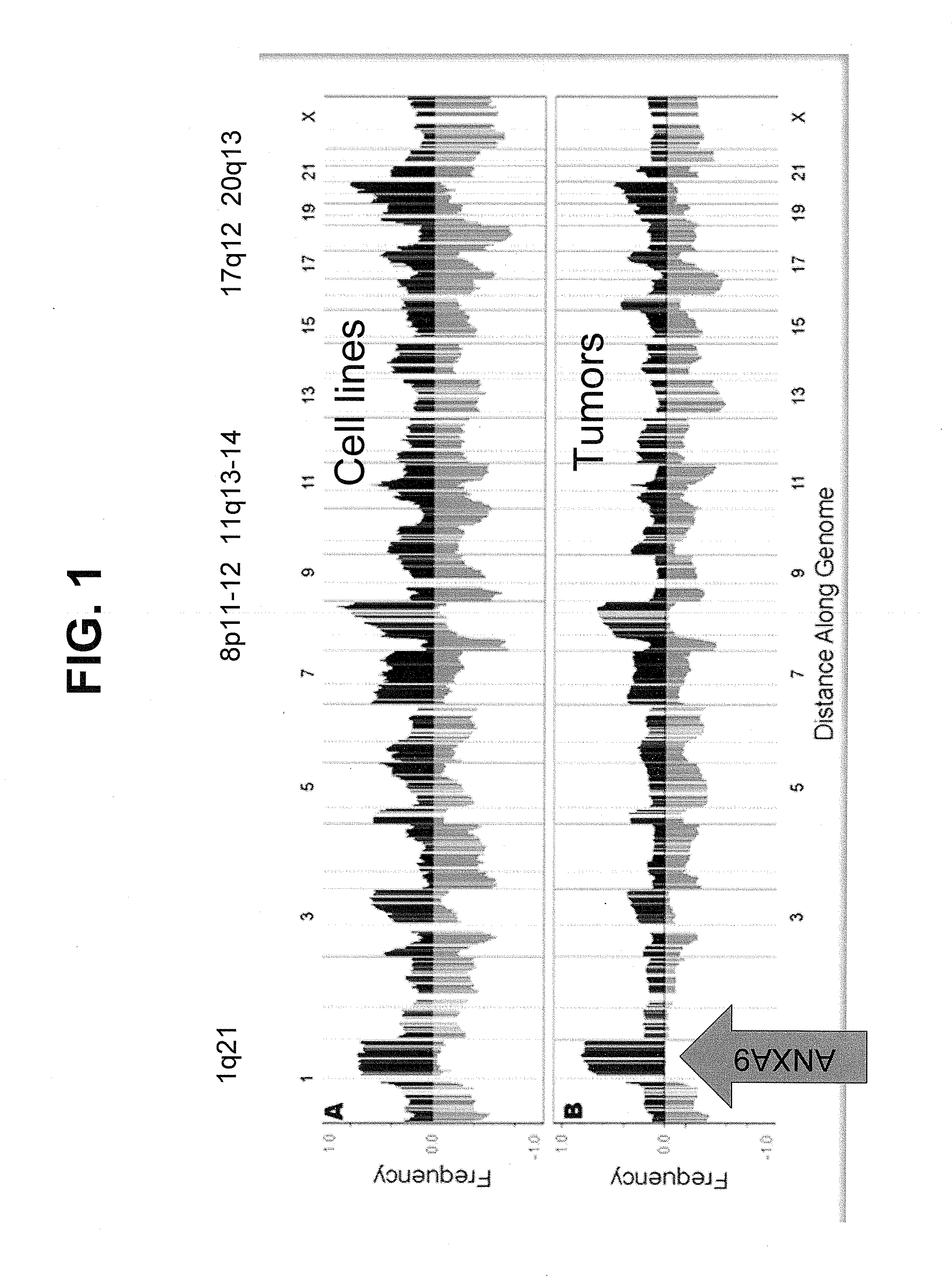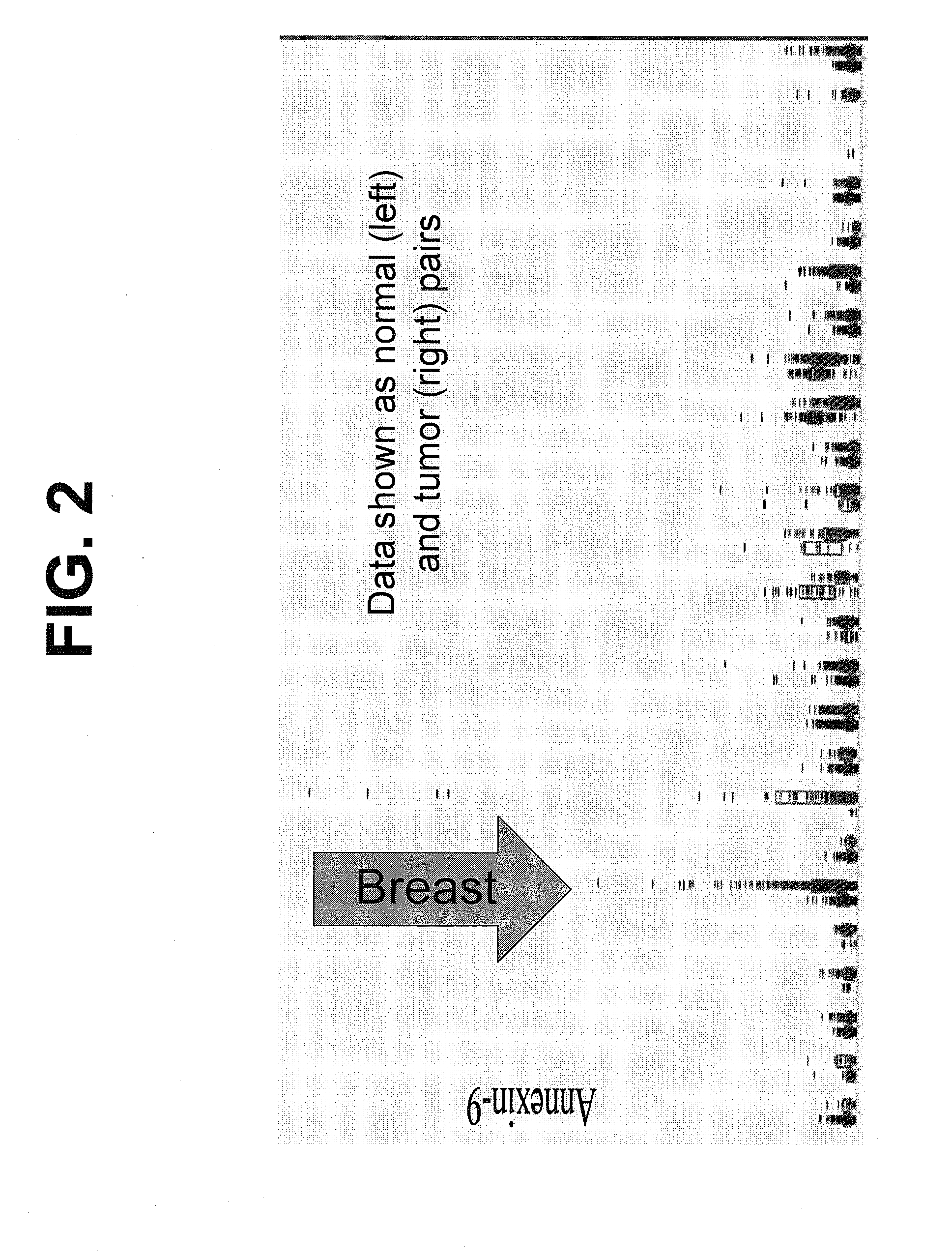Annexin A9 (ANXA9) Biomarker and Therapeutic Target in Epithelial Cancer
a biomarker and epithelial cancer technology, applied in the field of cancer biomarkers, can solve the problems of affecting the entire population, unable to predict which patients, and the medical community could not do much to prevent which patients, so as to reduce apoptotic surveillance and early detection
- Summary
- Abstract
- Description
- Claims
- Application Information
AI Technical Summary
Benefits of technology
Problems solved by technology
Method used
Image
Examples
example 1
Inhibition of ANXA9 Induces Cell Apopotosis
[0181]It was found that silencing of ANXA9 inhibits breast cancer cell growth and cell proliferation and inhibition of ANXA9 expression in breast cancer cells induces cell apoptosis. Thus, ANXA9 is implicated in proliferative aspects of breast cancer pathophysiology and serves as a possible therapeutic target in breast cancer.
[0182]A comprehensive study of gene expression and copy number in primary breast cancers and breast cancer cell lines was carried out, whereby we identified a region of high level amplification on chromosome 1q21 that is associated with reduced survival duration. The annexin family member, ANXA9, identified herein, maps to the region of amplification at 1q21. siRNA knockdown was applied to explore how amplification and over-expression of this particular gene play a role in breast cancer pathophysiology and to determine if this gene may be a valuable therapeutic target.
[0183]We transiently transfected 83 nM of siRNA for...
example 2
Delivery Inhibitors of ANXA9
[0189]Inhibitory RNAs (iRNAs) such as siRNA and shRNA oligonucleotide inhibitors, and / or small molecular inhibitors can be developed targeting ANXA9 gene expression. To delivery these inhibitory molecules, formulations are first tested on cultured cells and xenografts, then animal models to normal cells, animal models to cancerous tumor cells, and final humans having cancerous tumors. There are several approaches to development of amplicon gene inhibitors for ANXA9. One approach will be to deliver optimized siRNAs complexed to polymer-coated cationic liposomes. The other approach will be to develop small molecule inhibitors for targets located in key amplified regions in breast tumors that have been functionally validated using siRNAs. Apoptotic indices will be measured for cell lines and xenografts in which the target genes are amplified and that respond apoptotically to treatment with siRNAs. Lipofectamine constructs that induce apoptosis in cell lines...
example 3
Effective Formulations of ANXA9 Inhibitors
[0202]ANXA9 (and other) inhibitory formulations developed will be tested for their preferential effectiveness against xenografts that are amplified at the target loci and to test whether they enhance response to platinum and taxane compounds. The most effective formulation will be developed for clinical application. Basically we will establish xenograft models that are positive (i.e. amplified at least log 2>0.5) for each amplified locus; determine baseline paclitaxel and carboplatin responses for all xenograft models; determine responses to an anti ANXA9 Rx; measure responses to next priority target (designated T2) and responses to ANXA9 plus carboplatin; and finally measure responses to ANXA9+paclitaxel and responses of T2+carboplatin
[0203]Formulations that inhibit gene expression in xenografts and for which the 90% MAI concentration is less than the LD50 in xenografts that are amplified at the target locus will be tested at the 90% MAI co...
PUM
| Property | Measurement | Unit |
|---|---|---|
| diameters | aaaaa | aaaaa |
| volume | aaaaa | aaaaa |
| diameter | aaaaa | aaaaa |
Abstract
Description
Claims
Application Information
 Login to View More
Login to View More - R&D
- Intellectual Property
- Life Sciences
- Materials
- Tech Scout
- Unparalleled Data Quality
- Higher Quality Content
- 60% Fewer Hallucinations
Browse by: Latest US Patents, China's latest patents, Technical Efficacy Thesaurus, Application Domain, Technology Topic, Popular Technical Reports.
© 2025 PatSnap. All rights reserved.Legal|Privacy policy|Modern Slavery Act Transparency Statement|Sitemap|About US| Contact US: help@patsnap.com



